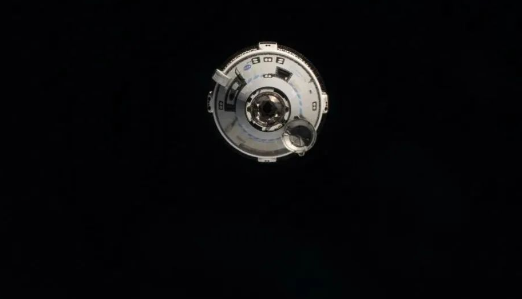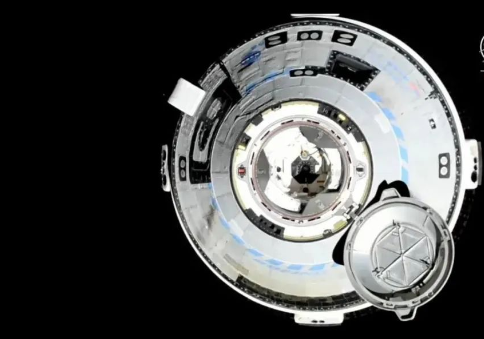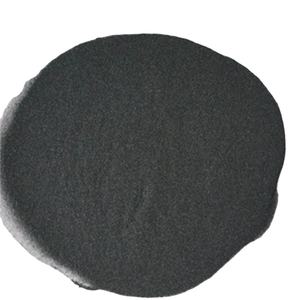For the two astronauts who had just boarded the Boeing “Starliner,” this trip was really frustrating.
According to NASA on June 10 regional time, the CST-100 “Starliner” parked at the International Space Station had one more helium leakage. This was the 5th leakage after the launch, and the return time had to be delayed.
On June 6, Boeing’s CST-100 “Starliner” approached the International Spaceport station during a human-crewed trip examination goal.
From the Boeing 787 “Dreamliner” to the CST-100 “Starliner,” it brings Boeing’s expectations for both significant markets of aeronautics and aerospace in the 21st century: sending humans to the sky and after that outside the environment. Regrettably, from the lithium battery fire of the “Dreamliner” to the leak of the “Starliner,” numerous technical and quality issues were revealed, which seemed to show the inability of Boeing as a century-old factory.
(Boeing’s CST-100 Starliner approaches the International Space Station during a crewed flight test mission. Image source: NASA)
Thermal spraying innovation plays a vital role in the aerospace area
Surface area fortifying and protection: Aerospace cars and their engines run under severe problems and require to deal with multiple challenges such as high temperature, high pressure, broadband, deterioration, and wear. Thermal spraying technology can considerably boost the life span and reliability of key elements by preparing multifunctional coatings such as wear-resistant, corrosion-resistant and anti-oxidation on the surface of these parts. For example, after thermal splashing, high-temperature location components such as turbine blades and burning chambers of aircraft engines can endure greater operating temperatures, decrease upkeep costs, and prolong the overall service life of the engine.
Upkeep and remanufacturing: The maintenance cost of aerospace tools is high, and thermal splashing modern technology can swiftly fix used or damaged components, such as wear repair work of blade sides and re-application of engine internal finishes, decreasing the demand to change repairs and conserving time and expense. In addition, thermal splashing also sustains the efficiency upgrade of old components and recognizes efficient remanufacturing.
Light-weight layout: By thermally splashing high-performance layers on lightweight substratums, materials can be given extra mechanical homes or special features, such as conductivity and heat insulation, without including too much weight, which meets the immediate requirements of the aerospace field for weight reduction and multifunctional combination.
New worldly growth: With the development of aerospace technology, the requirements for product efficiency are boosting. Thermal splashing innovation can change traditional materials right into finishings with novel residential or commercial properties, such as slope finishings, nanocomposite coatings, etc, which promotes the study development and application of new products.
Personalization and adaptability: The aerospace area has strict demands on the dimension, shape and feature of parts. The versatility of thermal splashing technology enables finishes to be tailored according to details needs, whether it is intricate geometry or unique performance demands, which can be achieved by exactly controlling the finishing density, composition, and structure.
(CST-100 Starliner docks with the International Space Station for the first time)
The application of spherical tungsten powder in thermal splashing technology is generally because of its distinct physical and chemical residential properties.
Coating harmony and thickness: Spherical tungsten powder has good fluidness and low certain surface area, which makes it easier for the powder to be uniformly spread and melted during the thermal spraying procedure, therefore creating a more consistent and dense layer on the substratum surface. This finishing can give far better wear resistance, rust resistance, and high-temperature resistance, which is crucial for crucial elements in the aerospace, energy, and chemical sectors.
Boost covering efficiency: Using spherical tungsten powder in thermal spraying can considerably improve the bonding strength, use resistance, and high-temperature resistance of the finish. These benefits of round tungsten powder are particularly vital in the manufacture of combustion chamber finishes, high-temperature part wear-resistant coverings, and various other applications because these elements operate in extreme environments and have very high material efficiency needs.
Minimize porosity: Compared to irregular-shaped powders, round powders are more probable to decrease the development of pores during piling and melting, which is exceptionally beneficial for coatings that need high securing or corrosion penetration.
Applicable to a variety of thermal splashing modern technologies: Whether it is flame splashing, arc splashing, plasma splashing, or high-velocity oxygen-fuel thermal spraying (HVOF), spherical tungsten powder can adjust well and show great process compatibility, making it very easy to choose the most ideal spraying innovation according to various requirements.
Special applications: In some special fields, such as the manufacture of high-temperature alloys, layers prepared by thermal plasma, and 3D printing, round tungsten powder is additionally made use of as a support phase or straight comprises a complex framework part, more expanding its application array.
(Application of spherical tungsten powder in aeros)
Provider of Round Tungsten Powder
TRUNNANO is a supplier of tellurium dioxide with over 12 years experience in nano-building energy conservation and nanotechnology development. It accepts payment via Credit Card, T/T, West Union and Paypal. Trunnano will ship the goods to customers overseas through FedEx, DHL, by air, or by sea. If you want to know more about purple tungsten used for, please feel free to contact us and send an inquiry.
Inquiry us


